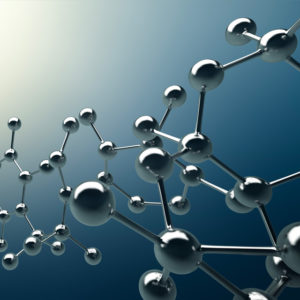Titrimetry
Home » Our Techniques » Titrimetry
Titrimetry is a collective name for a group of methods to accurately quantify a component in a liquid or solid material. Applications can vary from simple process control, like the determination of the concentration of a developer, to complicated valency analyses in solid materials.
During a titrimetric method, a stoichiometric chemical reaction takes place between a component from the sample and standard reagent with a well-known concentration. The standard solution is stepwise added as small, well-defined amounts until the reaction with the analyte is completed. The endpoint of such a titration can be monitored by electrochemical means (potentiometric titrations), visually or photometrically. Eventually, the concentration of the analyte in the sample can be calculated by using the total amount of reagent consumed, the concentration of the reagent solution and the reaction stoichiometry.
Titrimetric methods can be categorized by the type of chemical reaction involved. The most common categories are based on:
- Acid/base reactions
- Complexometric reactions
- Redox reactions
- Precipitation reactions
Ideal Uses of Titrimetry
- Quantification of an acid/base to determine the acidity/alkalinity of a solution (e.g. process water)
- Valency determination of Ce(III) versus Ce(IV) in glass (redox titration)
- Determination of the water concentration in organic liquids and solids (Karl Fischer titration)
- Chromium and nickel content in electroplating baths
- Total hardness of water (Mg2+ and Ca2+) by complexometric reaction with EDTA
- Sulphate content in electroplating baths (precipitation reaction)
Strengths
- Accurate and precise technique
- Fast
- Visual identification of reactivity upon equilibrium point(s)
Limitations
- Sample dissolution is often required, since most reactions occur in liquid phase
- Some chemical reactions are not element-specific. Compositional information about the sample matrix is therefore required
- Destructive
Titrimetry Technical Specifications
- Kind of information: Concentration of specific components, elements or valency states
- Sample type: Solids (bulk, after dissolution), solutions, inorganic and organic
- Sample amount & requirements: Typically > 10 mg. No special requirements
- Quantitative/Qualitative: Quantitative
- Accuracy: 1% relative
- Precision: 0.5% relative
- Detection limit: Depending on component; typically 1 µg
- Destructive / non-destructive: Destructive
Would you like to learn more about using Titrimetry?
Contact us today for your Titrimetry need. Please complete the form below to have an EAG expert contact you.
